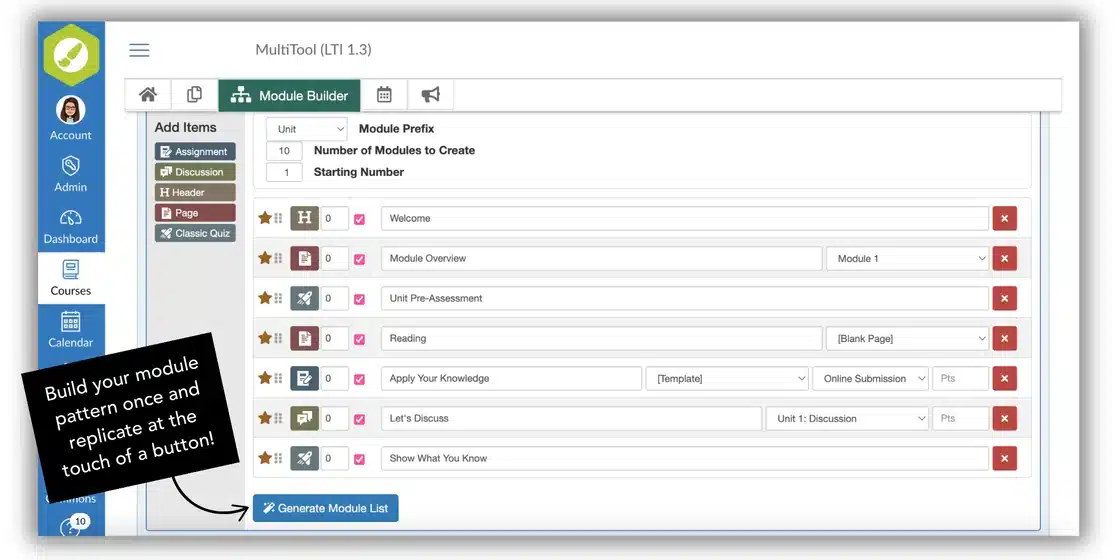Design Matters Digest: May Edition

Do my Canvas Courses Align with Learners’ Mental Model?
Welcome to the 5th edition of Design Matters Digest, a monthly newsletter that explores various elements of online course design and the research that can help you improve your Canvas courses. This month, we’re exploring the role of mental models in course design and their impact on successful, efficient learning.
“For meaningful learning to occur…students need to organize the multiple representations [of information] into a coherent mental model and integrate [it] with their prior knowledge.”
(Moreno & Mayer, 2007)
What is a Mental Model?
We organize our world and experiences into mental models–sets of expectations and understandings that act as a blueprint for future interactions. These mental models are unique to our individual minds and informed by prior knowledge (Al-Diban, 2012). When a task lines up with our existing mental models, we follow that blueprint and tackle the challenge with greater ease; when it doesn’t, our brains work harder to adjust our existing models or develop new ones in order to succeed (Al-Diban, 2012).
Unable to peer into each user’s mind, what’s a course designer to do? We’ve got good news: research explains that the learning environment – your course – can both mirror common mental models and support the integration of new ones to reduce learning friction.
Let’s explore some practical ways to boost learning efficiency through mental model alignment and some tools that can bring those ideas to life.
Mimic Web Design. Since learners will draw on existing mental models when navigating a new online space, employing web design best practices can help align your course with learner expectations. Adding quick-start buttons to the top of the course homepage mirrors common navigation placement. Utilizing visuals and a cohesive color scheme for various course elements (i.e. headings, buttons, support resources) helps direct learner interactions in a familiar way.

Match layout to the learning activity. Course designers can give a head start to learners’ mental model development by arranging content into relevant visual structures. Research here indicates that visual structures reduce cognitive load (see last month’s Digest on this topic!) and improve concept retention (Jung et al., 2022), as well as boost future assessment performance (Jitendra et al., 2009). Are you asking learners to compare multiple items? Lay them out in columns! Need to depict concept relationships? Consider borders to group information and icons to clarify the relationship.

Employ consistent structures. A consistent course structure allows learners to develop a mental model for success early in the learning journey. That model, once moved to long-term memory, continues to serve as their reference at each interaction, reducing cognitive load (Ifenthaler et al., 2011; Sweller et al., 2019). Organizing content and assignments into patterned modules with consistent naming conventions helps learners employ that mental model with ease, shifting students’ cognitive resources away from navigating the course to actively engaging with the content.

“Being able to apply a theme and customize the common buttons greatly simplifies our home pages. We recently started using a customized template for the MBA programs using one of these themes and the students have appreciated the consistency across courses.” – Jessamyn Saxon, Media Production Specialist at Auburn University College of Business
Learn More: Want to see more ways DesignPLUS can help you design professional-looking courses that better match your students’ mental models? Check out this 2-minute video.
To see more inspiring examples of what’s possible with DesignPLUS, watch Stories of Heroism: DesignPLUS Superpowers in Action featuring Florida International University Online or explore the new DesignPLUS Library to see pre-built content that can easily be pulled into your courses using DesignPLUS!
Do you know someone who would like to receive our Design Matters Digest? Tell them they can subscribe here.
You May Also Be Interested In...
Citations:
Al-Diban, S. (2012). Mental Models. In: Seel, N.M. (eds) Encyclopedia of the Sciences of Learning. Springer, Boston, MA. https://doi.org/10.1007/978-1-4419-1428-6_586
Ifenthaler, D., Masduki, I. & Seel, N.M. The mystery of cognitive structure and how we can detect it: tracking the development of cognitive structures over time. Instr Sci 39, 41–61 (2011). https://doi.org/10.1007/s11251-009-9097-6
Jitendra, A.K.; Star, J.R.; Starosta, K.; Leh, J.M.; Sood, S.; Caskie, G.; Hughes, C.L.; Mack, T.R. Improving seventh grade students’ learning of ratio and proportion: The role of schema-based instruction. Contemp. Educ. Psychol. 2009, 34, 250–264. https://doi.org/10.1016/j.cedpsych.2009.06.001
Jung, E.; Lim, R.; Kim, D. A Schema-Based Instructional Design Model for Self-Paced Learning Environments. Educ. Sci. 2022, 12, 271. https://doi.org/10.3390/educsci12040271
Moreno, R., & Mayer, R. (2007). Interactive multimodal learning environments: Special issue on interactive learning environments: Contemporary issues and trends. Educational Psychology Review, 19(3), 309–326. https://doi.org/10.1007/s10648-007-9047-2
Sweller, J., van Merriënboer, J.J.G. & Paas, F. Cognitive Architecture and Instructional Design: 20 Years Later. Educ Psychol Rev 31, 261–292 (2019). https://doi.org/10.1007/s10648-019-09465-5



